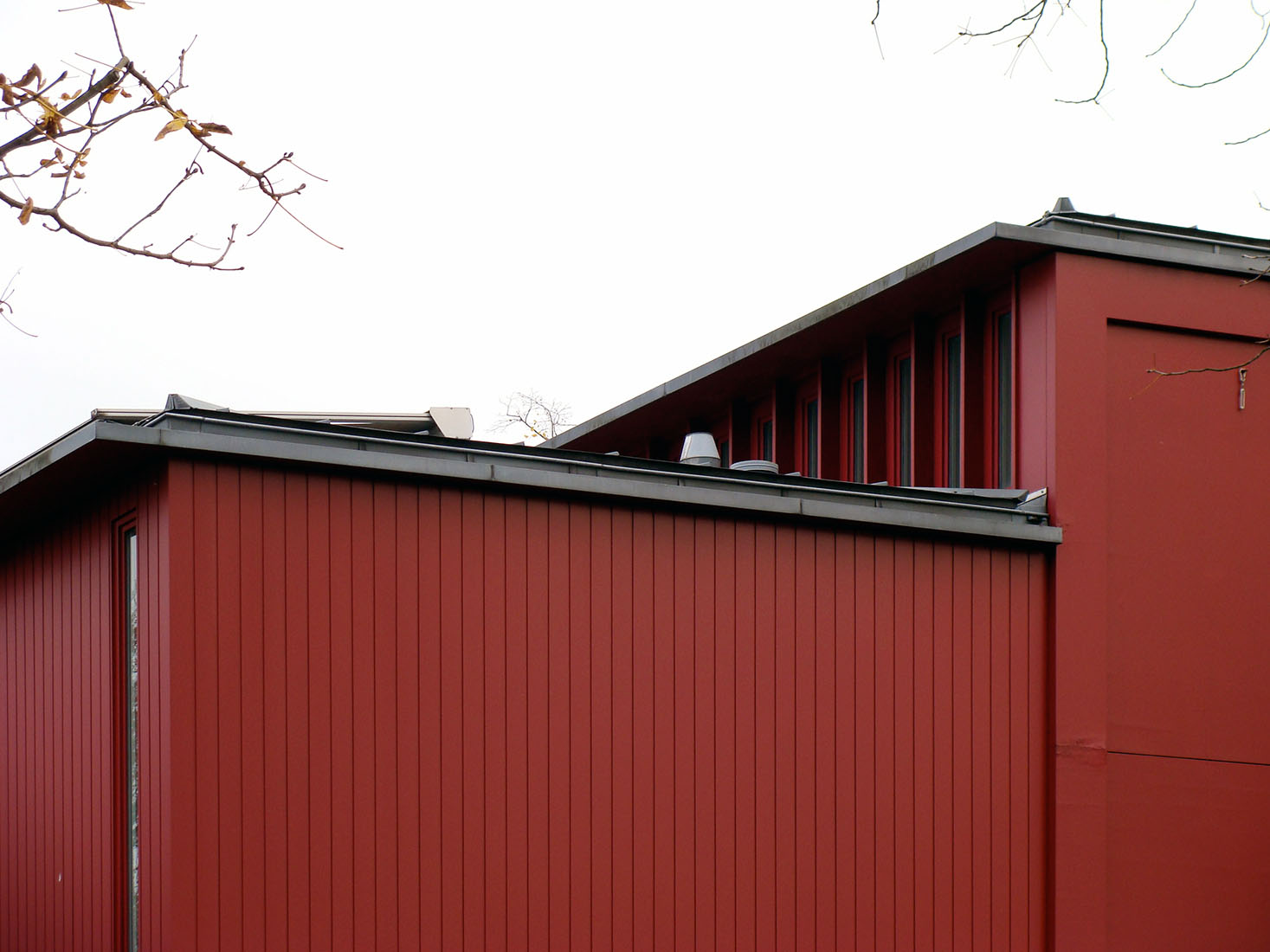 |
 |
 |
 |


Gmurzynska Gallery
Goethestrasse 65a, Cologne
1988 - 1991
Since its foundation in 1965, the Galerie Gmurzynska has mainly
presented works of art of the eastern European and Russian avant-garde.
Due to its artistic focus the Galerie Gmurzynska stands out from the countless Cologne galleries, collections and museums. The gallery received
international recognithion through exhibitions of works by Malevich, Rodchenko or Feininger. The collaboration between Galerie Gmurzynska and
the Swiss architects Diener & Diener started already in the 1980s, when the architects devised a special show on Russian avant-garde artists
for the Galerie Gmurzynska at the ART Basel fair and exhibition.
About one decade later, in 1988, the cooperation continued with a commission for planning the new gallery building in the upper-class district
of Marienburg. This district had been incorporated into the city of Cologne in 1988. The tree-lined, quiet residential streets are marked
by freestanding houses, built befor the 2nd World War in the style the english country houses. Some of those buildings today serve as
office spaces and as consulates, others are still used as representative homes. Soon after the incorporation int the city of Cologne,
the zoning regulations prescribed that only freestanding buildings could be realised in the district. The new gallery building should fit into this
structure and at the same time clearly contrast with it - a concept which was already before successfully implemented at numerous projects
by the architectural office. The cubes are lined up inconspicious and harmonious with the surrounding residential buildings. The facades of
the building are composed of narrow and wide vertical cedar and redwood boards and panels, all smoothly planed and painted red. In comparision
with its neighbours, the new building has a very simple and strict volumetry, reduced in the use of materials and details. This architectural language,
together with the dominant red color - a reference to the here presented works of Russian avant-garde - give the building a strong presence within
the mostly eclectic neighborhood. Only a few continuous windows and light slits interrupt the monochrome wooden facades, so that the passers-by
can’t see the interior of the gallery. Only a lavish portal opens up the building and marks the access to the “jewellery box”. On the inside the discreet
structure of the exterior is continued. The spatial organisation of the gallery building, which is disguised on the autside, becomes obvious here. The two
cubes have two stories each. One of them contains exhibition spaces, the other a library, two offices and three small cabinets. The axial, severe
arrangement of the rooms is dissolved by the varying dimensions and openings. To the visitor in the interior the outside is rather invisible, since the
windows and openings are mostly very narrow or near the ceiling. This layout results in exhibition spaces, which are almost completely self-referential.
An important feature is the light-created mood and the illumination of the exhibits, which changes with the time of the day and the season.
Due to its artistic focus the Galerie Gmurzynska stands out from the countless Cologne galleries, collections and museums. The gallery received
international recognithion through exhibitions of works by Malevich, Rodchenko or Feininger. The collaboration between Galerie Gmurzynska and
the Swiss architects Diener & Diener started already in the 1980s, when the architects devised a special show on Russian avant-garde artists
for the Galerie Gmurzynska at the ART Basel fair and exhibition.
About one decade later, in 1988, the cooperation continued with a commission for planning the new gallery building in the upper-class district
of Marienburg. This district had been incorporated into the city of Cologne in 1988. The tree-lined, quiet residential streets are marked
by freestanding houses, built befor the 2nd World War in the style the english country houses. Some of those buildings today serve as
office spaces and as consulates, others are still used as representative homes. Soon after the incorporation int the city of Cologne,
the zoning regulations prescribed that only freestanding buildings could be realised in the district. The new gallery building should fit into this
structure and at the same time clearly contrast with it - a concept which was already before successfully implemented at numerous projects
by the architectural office. The cubes are lined up inconspicious and harmonious with the surrounding residential buildings. The facades of
the building are composed of narrow and wide vertical cedar and redwood boards and panels, all smoothly planed and painted red. In comparision
with its neighbours, the new building has a very simple and strict volumetry, reduced in the use of materials and details. This architectural language,
together with the dominant red color - a reference to the here presented works of Russian avant-garde - give the building a strong presence within
the mostly eclectic neighborhood. Only a few continuous windows and light slits interrupt the monochrome wooden facades, so that the passers-by
can’t see the interior of the gallery. Only a lavish portal opens up the building and marks the access to the “jewellery box”. On the inside the discreet
structure of the exterior is continued. The spatial organisation of the gallery building, which is disguised on the autside, becomes obvious here. The two
cubes have two stories each. One of them contains exhibition spaces, the other a library, two offices and three small cabinets. The axial, severe
arrangement of the rooms is dissolved by the varying dimensions and openings. To the visitor in the interior the outside is rather invisible, since the
windows and openings are mostly very narrow or near the ceiling. This layout results in exhibition spaces, which are almost completely self-referential.
An important feature is the light-created mood and the illumination of the exhibits, which changes with the time of the day and the season.